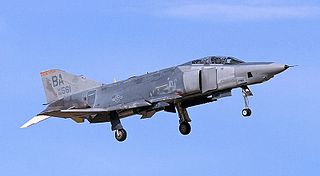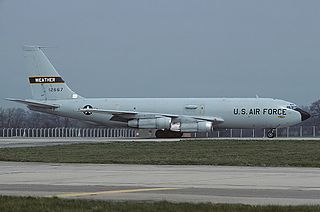
The 50th Space Wing was the United States Space Force's space and cyber warfare wing. The 50th Space Wing was assigned to Space Operations Command and headquartered at Schriever Air Force Base.

The 2nd Space Operations Squadron is a unit of the United States Space Force at Schriever Air Force Base, Colorado. Its mission is to manage the Navstar Global Positioning System satellite constellation for global navigation, time transfer, and nuclear detonation detection.

The 850th Space Communications Squadron is an inactive United States Air Force unit. It was a component of the 50th Network Operations Group, 50th Space Wing, Schriever Air Force Base, Colorado. The squadron was activated 1 December 1997 as the 850th Communications Squadron and redesignated the 850th Space Communications Squadron on 1 October 2002. It was inactivated on 31 January 2006, most of its functions and personnel having been incorporated into the 50th Space Communications Squadron.

The 67th Cyberspace Operations Group is a unit of the 67th Cyberspace Wing. Headquartered on Kelly Field Annex's Security Hill, the group is an Air Force information operations unit.

The 21st Space Operations Squadron is a satellite control unit of the Space Delta 6 of the United States Space Force, located at Vandenberg Space Force Base, California. Prior to July 2020, it was part of the 50th Network Operations Group. It operated Onizuka Air Force Station from its formation in 1991 until the closure of the station in 2010.

The United States Space Force's 4th Space Operations Squadron is a satellite operations unit located at Schriever AFB, Colorado. 4 SOPS is part of Space Delta 8 and responsible for command and control of the Milstar/Advanced Extremely High Frequency, Defense Satellite Communications System Phase III, and Wideband Global SATCOM satellite constellations. The 4th Space Operations Squadron's mission is to operate the Air Force's protected and wideband MILSATCOM systems. They provide warfighters global, secure, survivable, strategic and tactical communication during peacetime and throughout the full spectrum of conflict. The squadron also operates three mobile constellation control stations at various locations in conjunction with host partners. At higher readiness levels and during exercises, these personnel deploy with U.S. Strategic Command and U.S. Northern Command respectively.

The United States Air Force's 5th Expeditionary Space Operations Squadron is an expeditionary satellite operations unit, assigned to Air Force Space Command to activate or inactivate as needed.

The Space and Missile Systems Center (SMC) is the United States Space Force acquisitions and development center and is headquartered at Los Angeles Air Force Base (LAAFB), California. It was first established as the Western Development Division on 1 April 1954 and is the oldest space organization in the U.S. Armed Forces. Initially, it had responsibility for ballistic missiles, gaining space responsibilities in 1955. In 1957, it was redesignated as the Air Force Ballistic Missile Division. With the standup of Air Force Systems Command in 1961, the Air Force Ballistic Missile Division was split, forming the Space Systems Division and Ballistic Systems Division. In 1967, they were remerged as the Space and Missiles Systems Organization, before being split again in 1979 into the Space Division and Ballistic Missile Office. In 1990, both organizations regained their former names of the Space Systems Division and Ballistic Systems Division, however the Ballistic Systems Division was renamed the Ballistic Missile Office and subordinated to the Space Systems Division. In 1992, Air Force Systems Command was inactivated and replaced with Air Force Materiel Command, and the Space Systems Division was renamed the Space and Missile Systems Center. In 2001, it was transferred from Air Force Materiel Command to Air Force Space Command, becoming part of the U.S. Space Force at its formation in 2019.

The 91st Cyberspace Operations Squadron is an active United States Air Force unit, currently assigned to the 67th Cyberspace Wing at Kelly Annex, part of Lackland Air Force Base, Texas.

The 1st Air and Space Test Squadron was a unit of the 30th Space Wing of the United States Air Force, responsible for spacelift and test operations.

The 50th Network Operations Group was a United States Air Force group assigned to the 50th Space Wing at Schriever Air Force Base, Colorado. 50 NOG operated the Air Force Satellite Control Network and was responsible for the 50th Space Wing's cyber and communications systems.

The United States Space Force's 1st Space Operations Squadron is a space operations unit located at Schriever Air Force Base, Colorado. The squadron is responsible for performance launch, on-orbit, emergency, end-of-life testing and disposal operations providing warning, navigation, R&D, surveillance and weather to the president and the Secretary of Defense, Joint Chiefs of Staff and nine combatant commanders worldwide.

The United States Air Force's 7th Space Operations Squadron is an Air Force reserve space operations unit located at Schriever Air Force Base, Colorado.

The United States Air Force's 9th Combat Operations Squadron is an Air Force Reserve Command space operations unit located at Vandenberg Air Force Base, California. The 9th augments the 614th Air and Space Operations Center in operating the Joint Space Operations Center, performing combat operations, plans, strategy and intelligence assessments that enable the Commander, Joint Functional Component Command for Space to command and control space forces by providing worldwide space effects and theater support to combatant commanders.

The 50th Operations Group was a component of the 50th Space Wing, assigned to the United States Space Operation Command from 1991 to 2020. The group is stationed at Schriever Air Force Base, Colorado.

The 318th Cyberspace Operations Group is a United States Air Force information operations unit located at Joint Base San Antonio, Texas. The group was first activated during World War II as the 8th Photographic Reconnaissance Group. After training in the United States, the unit moved to the China-Burma-India Theater and engaged in hostilities until the end of the war. It returned to the United States in November 1945, and was inactivated at the Port of Embarkation.

The 23rd Space Operations Squadron is a satellite control unit of the United States Space Force. It is part of Space Delta 6 and is located at New Boston Space Force Station, New Hampshire. Prior to July 2020, part of the 50th Network Operations Group, itself a part of the 50th Space Wing.

The 2nd Troop Carrier Squadron is an inactive United States Air Force unit. It was last active in the reserve with the 65th Troop Carrier Group at Mitchel Air Force Base, New York where it was training with Curtiss C-46 Commandos. It was replaced by another unit, which absorbed its resources on 1 April 1953.

The 55th Space Weather Squadron is an inactive United States Air Force unit. It was last assigned to the 50th Operations Group at Schriever Air Force Base, Colorado, where it was inactivated on 16 July 2002.

The 556th Test and Evaluation Squadron is a United States Air Force unit. It is assigned to the 53d Test and Evaluation Group at Creech Air Force Base, Nevada, and conducts unmanned aircraft testing.



























